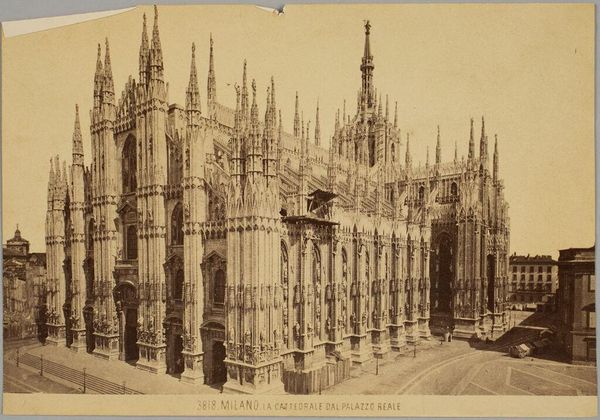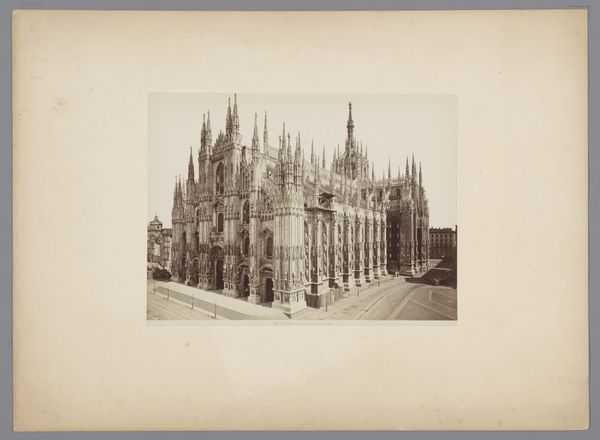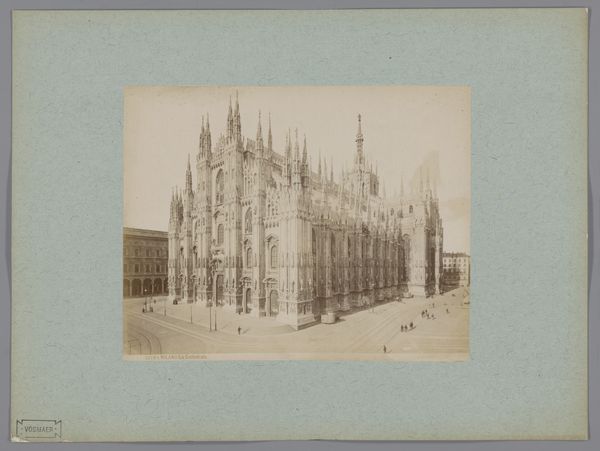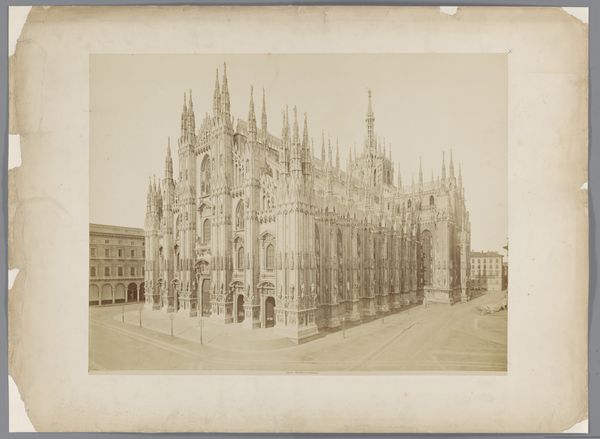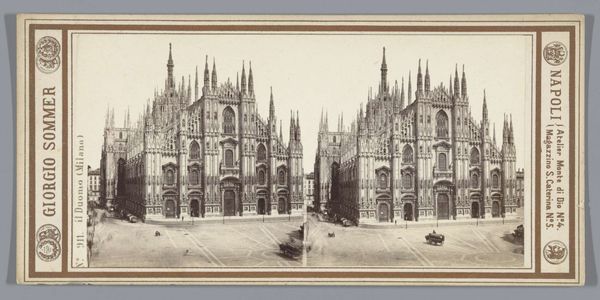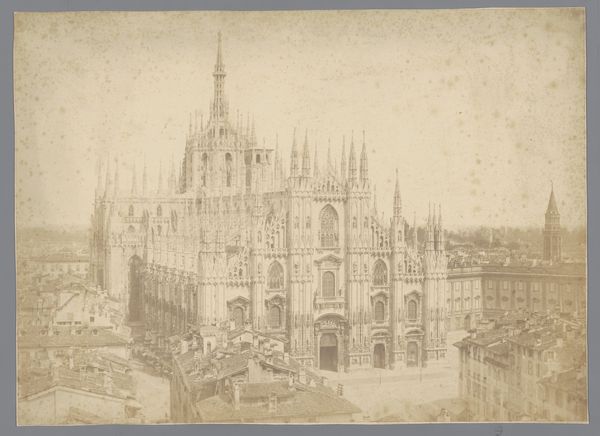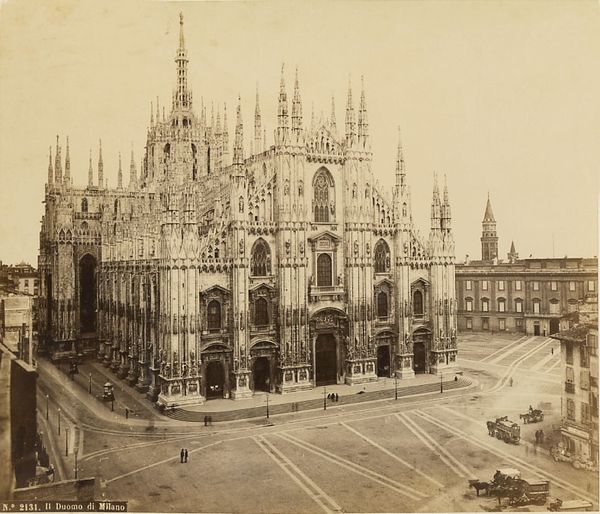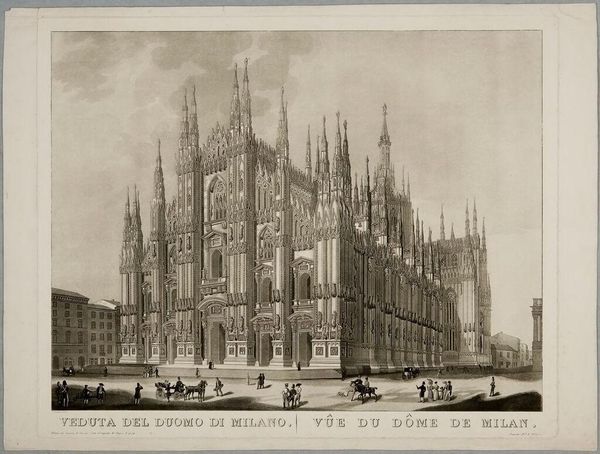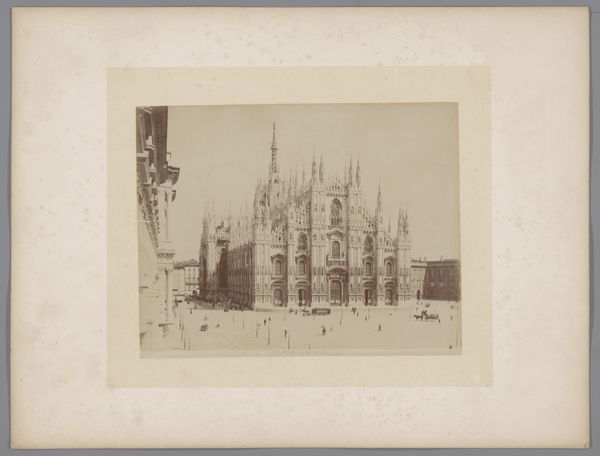
print, photography, architecture
# print
#
photography
#
cityscape
#
italian-renaissance
#
architecture
Dimensions: height 200 mm, width 250 mm
Copyright: Rijks Museum: Open Domain
Editor: This photograph by Giacomo Brogi, titled "Kathedraal van Milaan" and taken sometime between 1890 and 1920, is just incredible. The scale is massive, almost overwhelming, but rendered in such fine detail. What strikes me is how it presents power and maybe a certain permanence. How do you interpret this work? Curator: The photograph offers an entry point into discussions about power structures embodied in religious architecture during the rise of Italian nationalism. How does this cathedral function as a visual representation of dominance, especially given the political landscape of the late 19th and early 20th centuries? Think about who had access to commissioning and controlling such grand structures, and who was excluded. Editor: I hadn't considered the power dynamics so explicitly, but now that you mention it, the sheer size does feel like a statement. Was there an intentional message in using photography – a relatively new medium at the time – to capture and disseminate this image of authority? Curator: Precisely! Photography democratized the image, yes, but also served the interests of those who wanted to project a certain image of themselves and their nation. This photograph freezes the cathedral, turning it into a symbol ripe for ideological consumption. What stories might be hidden behind those impressive spires, stories of labor, faith, and exclusion? Editor: So it's not just about appreciating the aesthetics, but also unpacking the layers of meaning related to societal control and national identity. Curator: Exactly. By critically examining images like this, we start questioning the narratives they perpetuate and begin uncovering hidden voices and histories. It's a beautiful piece, but it speaks volumes about visibility, agency, and representation within larger cultural frameworks. Editor: This reframing gives me a whole new perspective. Thanks, it's really fascinating to consider beyond the aesthetic. Curator: Indeed. Art becomes powerful when we recognize its ability to shape perceptions.
Comments
No comments
Be the first to comment and join the conversation on the ultimate creative platform.
